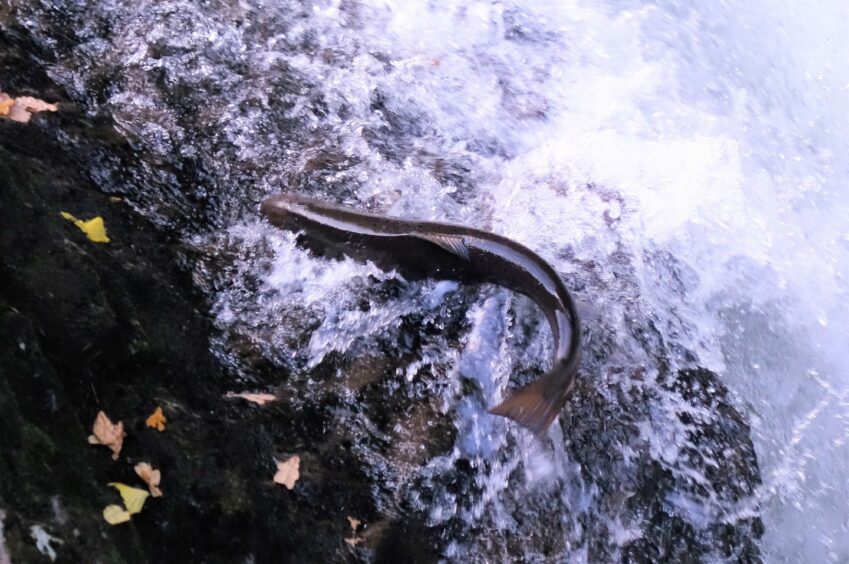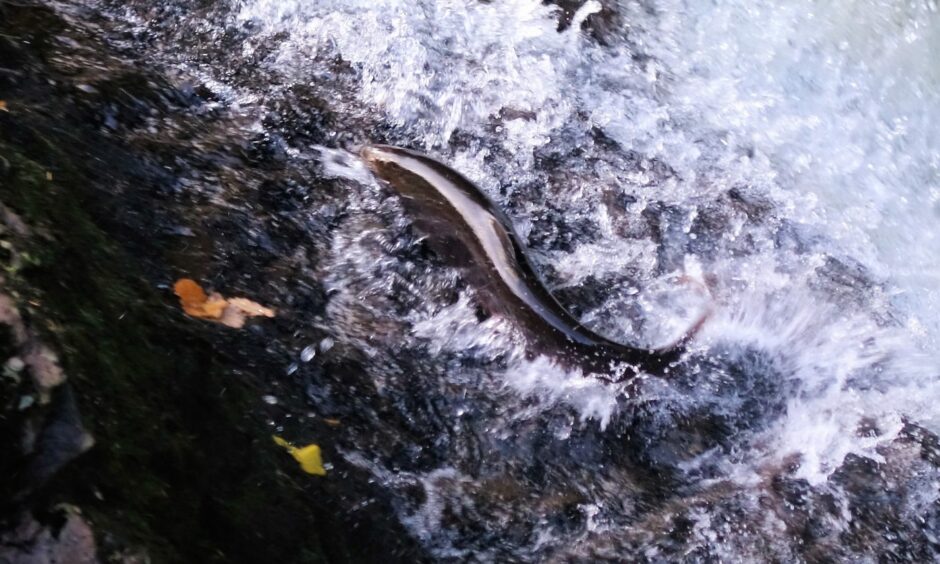The salmon launched itself from the churn at the bottom of the falls like a guided missile, tail flapping, and flanks glinting under the late autumnal sun.
It was a powerful leap, but the angle was terribly askew, and the hen salmon landed awkwardly half-way up on a rock ledge by the margin of the powerful torrent.
She lay stranded for a moment, and then, with powerful undulations of the body, managed to wriggle her way down the ledge so as to drop back down into the foaming pool below.
A surge of emotion swept my inner being after witnessing the trauma and effort this salmon had just endured.
Miracle of nature
Over the last few months, she had migrated from her feeding grounds in the cold northern seas off the Faroes, Iceland or Greenland, and by some miracle of nature had navigated back to her place of birth – the River Almond in Perthshire.
Over the period, she had survived the gauntlet of seals and other predators, but now the ultimate challenge lay ahead – the tumbling falls and rapids at Buchanty Spout, several miles north-east of Crieff.
Spout is a most apt name for this narrow fissure in the rocks, where a torrent of water spumes down a drop of several feet into a cauldron pool.
Above and below lie tumbling rapids, making this a truly formidable obstacle.
Yet despite this, over the course of an hour I witnessed several salmon succeed this most impressive of athletic feats.
Key to success
The key to success was a faultless launch, with a trajectory that was true and perfect right up the middle of the spout.
From my observations, it was the larger salmon that were most likely to ascend the falls, using their powerful muscles to propel themselves upwards and over the rocky top lip.
The pool they launch from has minimal underwater visibility due to the swirling churn, thus, achieving the perfect launch often relies upon luck, and inevitably many fish get their angle of attack wrong.
One salmon flew straight into the rockface by the edge of the spout with an audible slap that made me wince in sympathy.
The damage these salmon suffer from – both in terms of physical injury and loss of energy – is immense, and with each passing second that I spent by Buchanty Spout, my respect for these miraculous fish grew ever stronger.
Once the spout has been ascended, the salmon will seek out gravel beds further upstream, where the hen fish will dig a furrow with her tail and body to lay her eggs, which are then fertilised by the male.
The eggs are covered with gravel and the following spring tiny fry (alevins) will emerge.
Of course, natural river obstacles are not the only difficulties facing salmon, and in recent decades climate change has materialised as a new foe, affecting the ocean ecosystem on their north Atlantic feeding grounds.
For the salmon, life is an eternal struggle, but now it could be facing the ultimate challenge, and one from which there is potentially no return.











